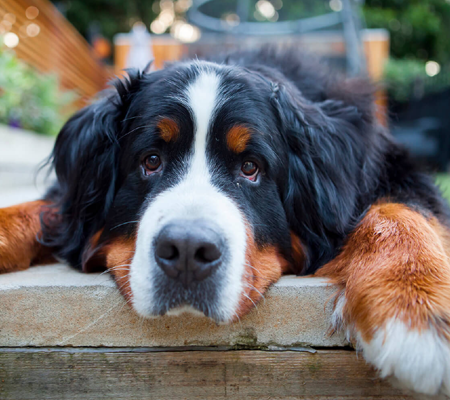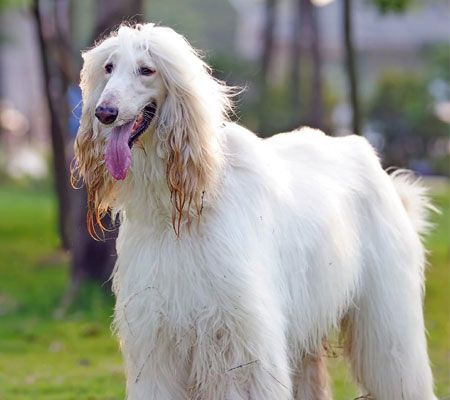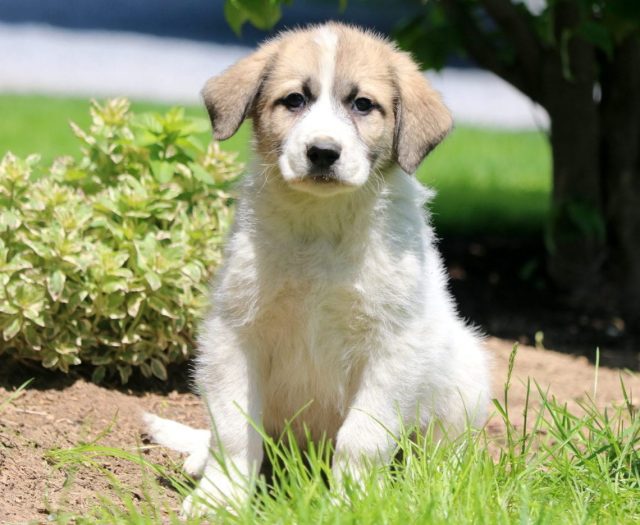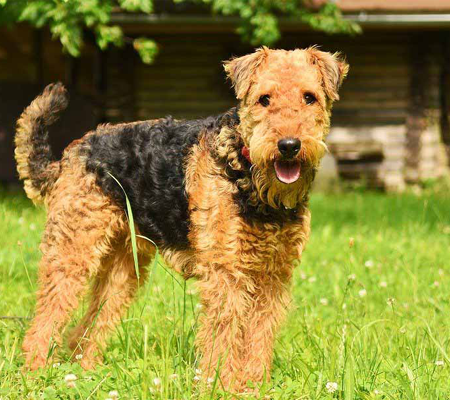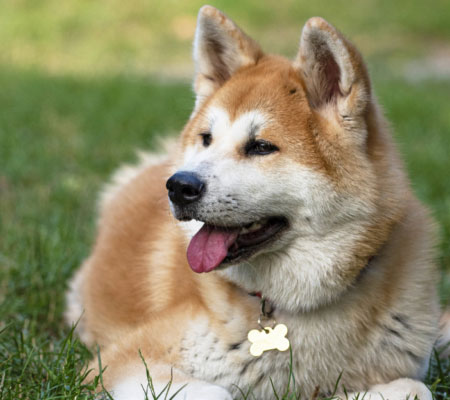The Bernese Mountain Dog is a highly adaptable
working dog from Switzerland's farmlands. They were created to herd livestock,
pull carts, and serve as devoted companions and watchdogs. They're one of four
different varieties of Swiss Mountain Dogs, and they're the only ones with long
hair.
The Bernese Mountain Dog gets its name from the
canton of Bern. They're a huge and robust canine breed with a kind and calm
demeanour who excels in conformation, obedience, tracking, herding, and carting
contests.
The amiable personality, intellect, and highly
trainable character of this breed may appeal to a new dog parent. First-timers,
on the other hand, should be cautious. Because of its size and strong activity
level, the Bernese Mountain Dog can be challenging to handle. As a result, they
despise being cooped up in apartments all day. They slobber a lot and need to
have the drool cleaned off their faces every now and again.
This breed makes excellent watchdogs, but it also
means they have a proclivity for barking – a lot. Even though they are extremely
gentle when completely adult and properly taught, they may like to pursue
smaller animals and play rough.
This breed will demonstrate unconditional love and
dedication to an experienced pet parent who can match the Bernese's enthusiasm,
give ample space, keep up with grooming, and devote time and effort to
training. A well-trained Bernese Mountain Dog is a wonderful companion that
will adore the entire family. They adore children and will even cheerfully
welcome newcomers to the family if they've had proper socialisation training.
There aren't many breeds that have a higher
proclivity towards friendliness. As a result, if you're up for the task, a
Bernese Mountain Dog is a great choice.
Bernese Mountain Dog Highlights
Breed Size
Large
Nature
Gentle, Willful, Aloof, Friendly
Energy Level
Cool
Intelligence
High
Barking Level
When Necessary
Coat Length
Long, Medium
Breed Group
Working
Droll Amount
Medium
Good with
Seniors, Cats, Dogs, Children, Familes
Feed Level
Medium, High
Colour Type
Black,brown / chocolate / liver,white
Other Facts
Easy to train,requires lots of grooming,prone to health issues,cold weather tolerant,good for first-time pet owners.
Dog History
The Molosser, an ancient breed, stands out as one of
the most adaptable, well-traveled, and influential in the creation of several
Mastiff-type dogs, including Berners.
The four Swiss Sennenhund breeds (Appenzeller
Sennenhund, Entlebucher Sennenhund, Greater Swiss Mountain Dog, and Berner
Sennenhund) are thought to have evolved from crosses between Swiss farm dogs
and the Molosser or Mastiff-type dogs brought with the Romans when they invaded
the Alps in the first century B.C.
The Berner has most certainly been pulling carts,
escorting cattle, keeping watch, and giving owners with devoted companionship
on Swiss farms for more than 2,000 years, discreetly tucked away on modest
estates in the Alps.
By 1888, just 36% of the Swiss population worked in
agriculture, and the demand for a robust dog capable of herding cattle and
pulling a cart loaded with merchandise had declined. The Swiss, on the other
hand, got concerned in protecting their national breeds in 1899, and created
the Berna dog club. Breeders of a variety of purebred dogs were among the
group's members.
The Swiss Dog Club hosted a show in Ostermundigen in
1902 to raise awareness of Swiss mountain breeds. Two years later, the breeds
made significant progress as a result of numerous events: The Swiss dog club
sponsored a class for Swiss "shepherd dogs," which included Mountain
dogs, at an international dog show in Bern. This was also the first year that
the breed was dubbed "Bernese." The Bernese Mountain Dog was
officially recognised as a breed by the Swiss Kennel Club in the same year.
During World War I, dog exhibitions and breeding
were put on hold in order to focus on the war effort. However, following the
war, the first Bernese Mountain Dogs were shipped, first to Holland and
subsequently to the United States—despite the fact that the breed was not recognised
in the United States.
The first litter of Berner puppies was born in
England in 1936, when two British breeders began importing Berners. A female
and a male Berner from Switzerland were also imported by the Glen Shadow kennel
in Louisiana in 1936. Glen Shadow received a letter from the AKC in early 1937
informing him that the Bernese Mountain Dog had been recognised as a new breed
in the Working Class.
World War II halted the breed's expansion outside of
its home area once more, although importation and registration resumed in the
United States after 1945.
With 62 members and 43 registered Berners, the
Bernese Mountain Dog Club of America was created in 1968. Three years later,
the group had grown to over 100 members. Meanwhile, the breed was resurrected
in the United Kingdom after becoming extinct in England during World War II.
In 1981, the AKC accepted the Bernese Mountain Dog
Club of America as a member club. The American Kennel Club (AKC) approved the
current Bernese Mountain Dog standard in 1990.
22-27 inch 43-55 kg 7-10 year
Height

Weight

Life Span
Health and Care
Due to reckless breeding, Berners might have health
problems. Although not all Berners will contract any or all of these illnesses,
it's vital to be aware of them if you're thinking about getting one.
Checking for hip dysplasia, elbow dysplasia,
hypothyroidism, and von Willebrand's disease in Berners should be discussed
with your veterinarian. Here's some more information on a few ailments to keep
an eye out for.
- Cancer
- Hip Dysplasia
- Elbow Dysplasia
- Progressive Retinal Atrophy (PRA)
- Portosystemic Shunt (PSS)
- Von Willebrand's Disease
Care
Berners are not well adapted to living in an
apartment or a condo. The greatest option is a house with a large, securely
fenced yard. Berners have a lot of energy since they are working dogs. They
require a minimum of 30 minutes of rigorous exercise every day in addition to
yard play; three times that amount keeps this tough dog in peak shape.
The Berner is a natural choice for chilly areas
because to its thick, beautiful coat. They like having fun in the snow. They're
prone to heat stroke because of his black coat and enormous stature. Allowing
children to exercise vigorously when it is really hot is not a good idea;
instead, confine activity to the early mornings or nights when it is cooler.
Keep them cool during the day if possible.
If you're raising a Berner puppy, you'll need to be
extra careful. Berners, like many large-breed dogs, develop quickly between the
ages of four and seven months, putting them at risk for bone problems and
damage. They thrive on a high-quality, low-calorie diet that restricts their
growth.
Additionally, wait until the Berner puppy is at
least two years old and their joints are completely grown before allowing them
to run and play on hard surfaces (such as pavement), leap excessively, or pull
big objects. Normal grassy play, as well as puppy agility lessons with their
one-inch leaps, are OK.
Dog Breed Care Tips and Important
Instructions
"If you're getting a Bernese mountain dog
puppy, you should also acquire a Roomba," Derse advises. "Because
they sweat profusely. There will be a lot of grooming. There was also a lot of
vacuuming." Brushing every couple of days and comprehensive grooming every
four to eight weeks is required for a Berner's smooth double-layer coat.
Training and socialisation should begin at a young
age, with a focus on positive reinforcement rather than severe punishment.
Berners are sensitive dogs that like making their people happy, so positive
reinforcement works well for them. Simply put, don't let a Berner alone for too
long, or they'll get into mischief.
Dog food prepared from high-quality components
should be fed to your Bernese mountain dog. Berners may eat a lot, so keeping
track of their food and exercise is a vital aspect of their care. A trip to the
veterinarian can help you figure out how much and how often you should feed
your dog.
Feeding
A Bernese Mountain Dog diet should be designed for a
big breed that requires a lot of energy and exercise. For suggestions on what
to feed your Bernese Mountain Dog and the proper portion amounts, ask your
veterinarian or a professional nutritionist. As they go from puppyhood through
adulthood and senior years, their food requirements will alter. Keep track of
these dietary needs.
Fun Facts
- This type is incredibly powerful, capable of pulling
up to ten times its own weight, or approximately 1,000 pounds!
- Bernese mountain dogs were previously used as
delivery dogs, pulling carts stocked with dairy goods, bread, and other
commodities from farm to farm, thanks to their cart-pulling talents. Today,
they may be more inclined to use their abilities for the benefit of their
owners, such as hauling youngsters in carts for entertainment.
- Only the Bernese mountain dog has long hair among
the four Sennenhund breeds, often known as Swiss mountain dogs or Swiss cattle
dogs. The Greater Swiss mountain dog, Appenzeller mountain dog, and Entlebucher
mountain dog are the other non-furry breeds in this category.
- Berners are commonly referred to as vieräugler
("four eyes") dogs because of the little rust-colored marks over
their eyes.
- Luna the Berner has almost 100,000 Instagram
followers who follow her exploits.
Home Training Tips and General Information
- Love is all a dog requires.
- One of the most prevalent dog claims I hear as a
canine behavioural consultant is that all a dog requires is love. Is that
correct or incorrect? You might be surprised by my response!
- There are four things you must do correctly.
- It doesn't have to be difficult to train your
Bernese Mountain Dog puppy. You can influence your puppy's behaviour and make
training easier right now by doing four simple things.
- What Should You Teach? (and When)
- Dog training begins the minute your puppy arrives at
your home. If you utilise the incorrect training approach, your puppy will
begin to make decisions about how he wants you to fit into his life, which will
lead to conflict and behavioural issues. You must respond appropriately to
anything your puppy does, or he will learn the incorrect things. Here is my
suggested training schedule (what to teach and when to teach it) for your Bernese
puppy.
- Teach Your Bernese Mountain Dog To Be Respectful Of
You
- I utilise and suggest "Respect Training"
as a dog training strategy for Bernese Mountain Dogs. When you say
"No," a dog who respects you will stop what he's doing and do what
you say. Teach your dog to respect you means interacting with him in different
ways.
- Teach The Correct Words In The Correct Context
- My training approach for Bernese Mountain Dogs
include teaching certain phrases in precise ways so that your dog not only
learns the words but also develops the respectful attitude that makes him want
to obey you. Teach your dog to comprehend what you're saying by teaching him
words. Teach those terms in the proper context, and he will follow your
instructions.
- Housebreaking Your Bernese Mountain Dog
- There are two essentials to breaking into a house.
There are only two, but you must get them both correct. And I don't mean 50
percent correct; I mean 100 percent correct. Otherwise, you'll wind up with a
dog that is only 50% toilet trained, which no one wants. So there you have it —
your two housebreaking keys.
- Socializing Your Bernese Mountain Dog
- Socialization refers to teaching your Bernese
Mountain Dog to interact with strangers and other animals in a pleasant manner.
FAQS
|
Is it true that Bernese mountain dogs require a lot of attention? |
|
Berners are a social breed in general, but not always with other dogs.
The Bernese Mountain Dog will frequently identify a favourite person and then
want regular attention from that person. |
|
Is it possible to let Bernese mountain dogs alone for 8 hours? |
|
Berners are devoted dogs who form strong bonds with their owners. They
prefer to be near their loved ones, but with adequate exercise and mental
stimulation, they can be left alone for five to eight hours. When they are
lonely, they may develop destructive habits, thus crate training may be
required. |
|
Is it possible to let Bernese mountain dogs off the leash? |
|
Off-leash walks with you in suitably chosen locations are restricted and
supervised for a Berner who has been completely obedience-trained. No breed
of dog is acceptable for you if you do not want the duty of restricting and
overseeing your companion. |
|
What is the difficulty of training a Bernese Mountain Dog? |
|
It does not have to be tough to train a Bernese Mountain Dog. However,
for the greatest outcomes, begin training and socialisation of your dog at an
early age so that they grow into well-rounded and well-behaved puppies later
in life. |
|
Bernese Mountain Dogs: Are They Anxious? |
|
Because of their devotion to their family, Bernese Mountain Dogs are
prone to canine separation anxiety. They may develop destructive behaviour if
they are left alone for long periods of time and do not receive adequate
attention and exercise. |
|
Why are Bernese Mountain Dogs pawing at you? |
|
Because you are their pack leader, all dogs like being touched and being
at their owner's side. Bernese Mountain Dogs, in particular, cling to their
owners like glue. It's no surprise that Sammy like to sit between your legs
more than Jack. |
Bernese Mountain Dog Unique Name
| Male Name | Female Name |
|---|---|
| Brody | Beau |
| Chico | Carly |
| Flash | Daphne |
| Gordie | Gia |
| Huck | Hailey |
| Joey | Hannah |
| Lewis | Kayla |
| Noah | Leia |
| Mimi | Maddie |
| Quincy | Madison |
| Romeo | Mattie |
| Sawyer | Maya |
| Spike | Mocha |
| Taco | Precious |
| Tank | Raven |
| Tesla | Sally |
| Yogi | Suki |
| Bear | Brindle |
| T-bird | Cisco |
| Whiz | Onie |

